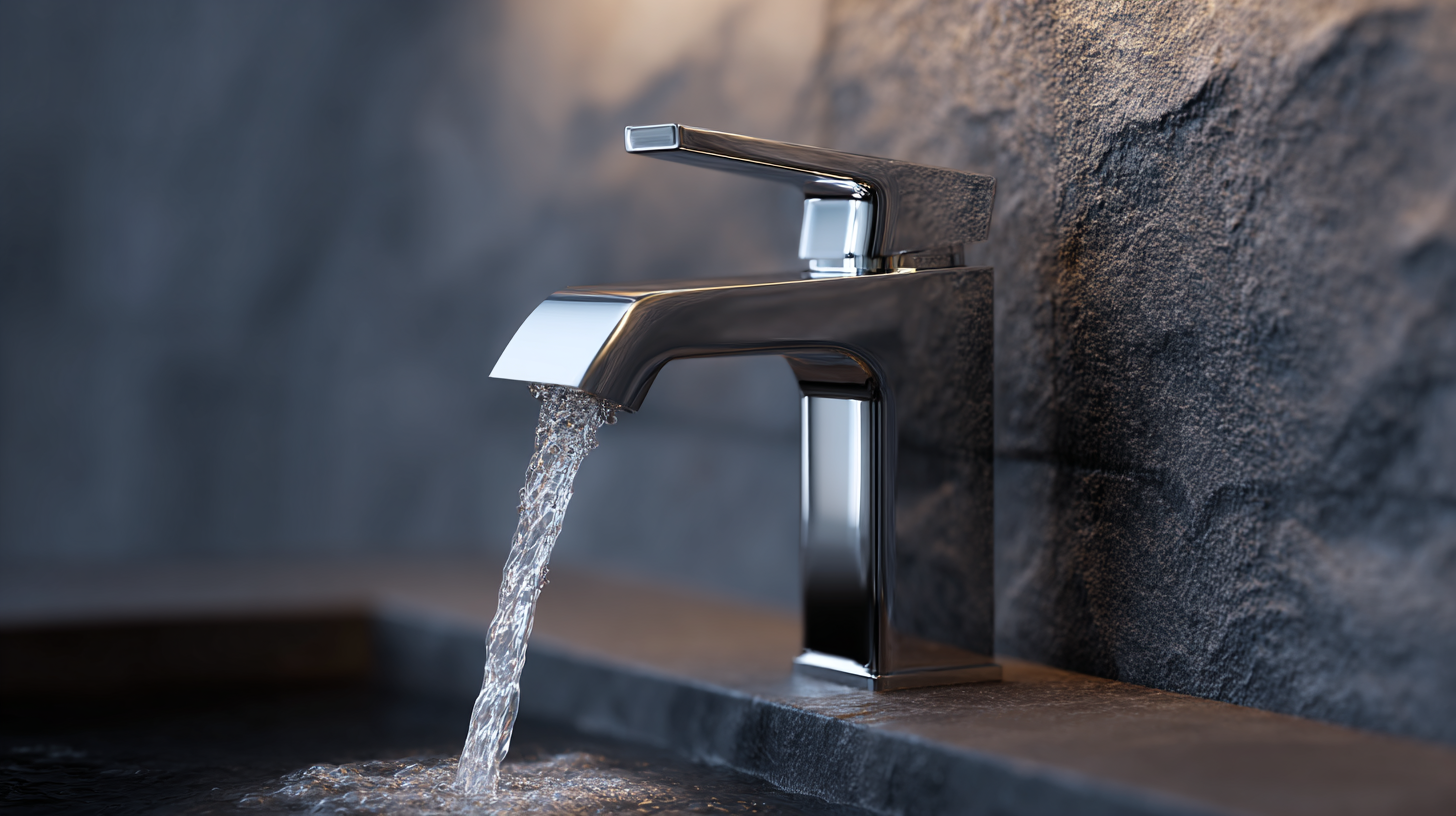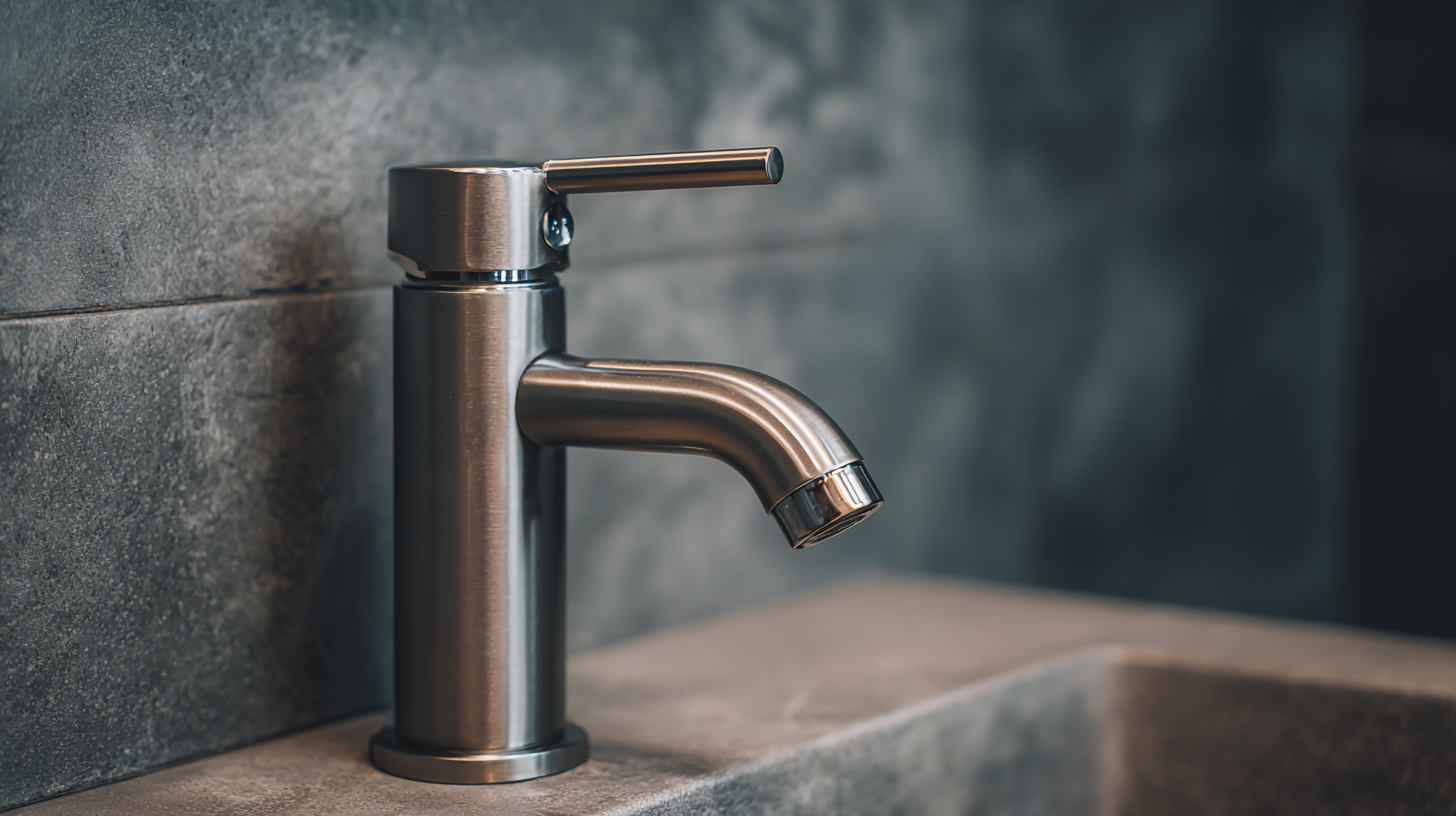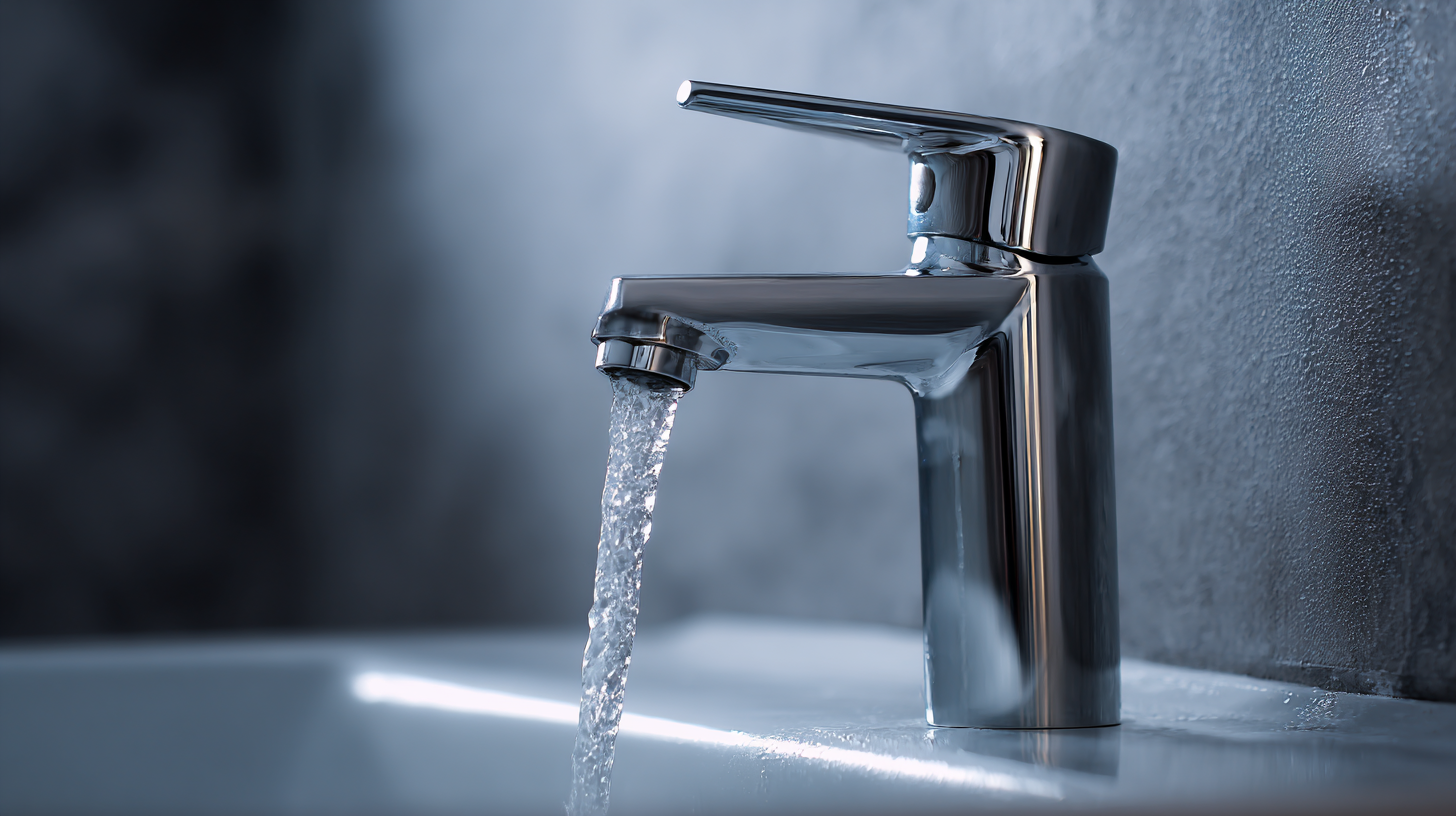 In recent years, the design of basin faucets has undergone a remarkable evolution, reflecting the broader trends in modern interior aesthetics and sustainability. According to a report by the Global Kitchen and Bath Industry Association, the basin faucet market is projected to grow at a CAGR of 6.5% from 2020 to 2027, driven by consumers' increasing demand for innovative and eco-friendly products. With an array of styles that range from minimalist to multifunctional, the best basin faucets now not only serve practical purposes but also enhance the overall ambiance of a space. This shift in consumer preference towards high-quality, designer faucets signifies a new era in bathroom and kitchen design, where functionality, durability, and aesthetic appeal converge.
As we envision tomorrow's living spaces, understanding the intricacies of basin faucet evolution becomes essential for both homeowners and designers looking to make informed choices.
In recent years, the design of basin faucets has undergone a remarkable evolution, reflecting the broader trends in modern interior aesthetics and sustainability. According to a report by the Global Kitchen and Bath Industry Association, the basin faucet market is projected to grow at a CAGR of 6.5% from 2020 to 2027, driven by consumers' increasing demand for innovative and eco-friendly products. With an array of styles that range from minimalist to multifunctional, the best basin faucets now not only serve practical purposes but also enhance the overall ambiance of a space. This shift in consumer preference towards high-quality, designer faucets signifies a new era in bathroom and kitchen design, where functionality, durability, and aesthetic appeal converge.
As we envision tomorrow's living spaces, understanding the intricacies of basin faucet evolution becomes essential for both homeowners and designers looking to make informed choices.
In the ever-evolving landscape of faucet design, industry standards play a crucial role in ensuring safety and quality. As the U.S. faucet market is projected to grow significantly, reaching an estimated $9.38 billion by 2032, it becomes increasingly vital for manufacturers to prioritize compliance with safety regulations. Recent warnings from safety agencies regarding lead contamination in faucets highlight the importance of adhering to rigorous standards. This urgency serves as a reminder to the industry that consumer safety cannot be compromised.
With a compound annual growth rate (CAGR) of 5.9%, the faucet market is experiencing robust growth, driven by innovations and increasing consumer demands. However, this growth must be accompanied by a commitment to lead-free manufacturing and other safety benchmarks. Companies that successfully integrate these standards into their production processes not only enhance their brand reputation but also contribute to a safer environment for customers. As we envision the future of faucet design, the importance of strong industry standards cannot be overstated; they are essential for fostering trust and ensuring long-lasting quality in modern manufacturing.
In modern basin faucet design, several key challenges arise as designers strive to balance aesthetics with functionality. With the increasing demand for sleek, minimalist appearances, designers must find ways to incorporate advanced technology seamlessly. Wireless and touchless faucets, for instance, represent the forefront of innovation, yet they often face challenges related to installation complexity and user adaptability. Travelers in the world of design are now more than ever focusing on user-friendly installations that do not compromise on the design quality.
Moreover, sustainability has become a significant consideration driving modern design choices. Designers must navigate the use of eco-friendly materials and efficient water flow technologies while ensuring that the final product remains visually appealing. As homeowners increasingly lean towards environmentally responsible options, the challenge lies in creating faucets that are both green and stylish. The push for unique colors and finishes adds another layer of complexity, requiring designers to be inventive and adaptable in a competitive marketplace. These challenges shape the future of basin faucet design, paving the way for innovation while catering to evolving consumer demands.

In recent years, the design of basin faucets has undergone a remarkable transformation, driven by both functionality and aesthetic appeal. To address common production problems, manufacturers are adopting innovative solutions, such as modular designs and advanced materials that enhance durability while streamlining the production process. These advances not only reduce waste but also allow for customization, ensuring that consumers can find a style that fits their unique bathroom decor.
Tip: When selecting a basin faucet, consider looking for options that utilize eco-friendly materials. This not only supports sustainability but often leads to better quality products that last longer.
Another notable innovation is the integration of smart technology in faucet design. Featuring touchless activation and temperature control, these faucets are designed to enhance convenience while simultaneously addressing hygiene concerns. By eliminating the need to touch fixtures, smart faucets contribute to a cleaner bathroom environment.
Tip: Always check for warranties and customer reviews when purchasing new technology-infused faucets, as these can provide insight into performance and longevity, helping you make a well-informed choice.
In the realm of modern design, the evolution of basin faucets reflects a remarkable intersection of technology and aesthetics. Today, advanced features such as touchless activation and water-saving mechanisms are transforming how we interact with our bathroom and kitchen fixtures. These innovations not only enhance convenience but also promote sustainability in our daily routines.

To upgrade your faucet experience, consider opting for faucets with smart technology that allows for temperature regulation and water flow settings through mobile apps. This puts control at your fingertips, ensuring that you can customize your experience based on personal preferences and needs.
Additionally, when selecting a new faucet, prioritize models that feature eco-friendly designs. Look for products that comply with contemporary water efficiency standards, helping to reduce your environmental footprint. Remember, a blend of style and sustainability is essential as we envision a greener tomorrow in home design.
As we look ahead to the future of basin faucets, several key trends are poised to transform the landscape of bathroom design. A report by Grand View Research indicates that the global smart faucet market is expected to grow at a compound annual growth rate (CAGR) of 18.2% from 2021 to 2028. This surge reflects a growing consumer preference for convenience and technological integration in everyday fixtures. Smart faucets equipped with touchless operation and water temperature control are becoming standard, focusing on energy efficiency and sustainability, which resonate with environmentally conscious consumers.
Another trend shaping the future of basin faucets is the rise of customizable designs. According to a study by Statista, nearly 40% of consumers prioritize personalization in home improvement purchases. Manufacturers are increasingly offering modular designs that allow users to mix and match finishes, spouts, and handles, providing a tailored aesthetic that complements individual tastes. This trend not only enhances user experience but also encourages creativity in bathroom design—a space that continues to serve as a sanctuary in modern homes. As we move forward, these advancements in technology and personalization will undoubtedly redefine how we experience and interact with basin faucets.
| Feature | Current Trends | Future Predictions | Sustainability Practices |
|---|---|---|---|
| Smart Technology Integration | Touchless activation, temperature control | AI-driven personalization, voice commands | Usage tracking for water conservation |
| Materials and Finishes | Brushed nickel, matte black | Recycled materials, antimicrobial coatings | Cradle-to-cradle production techniques |
| Design Aesthetics | Minimalist, sleek lines | Biophilic design elements | Eco-friendly finishes and colors |
| Water Efficiency | Low-flow aerators, efficient use | Smart metering for optimal performance | Zero-waste manufacturing processes |
| Customization Options | Color choices, handle styles | 3D printed customization | Local sourcing for custom designs |
